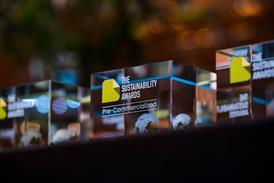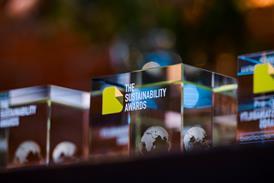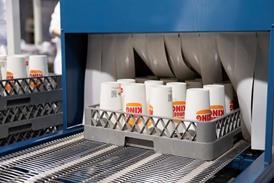
YUTOECO is an innovative, forward-looking sub-brand under YUTO, driven by the guiding principle of sustainability and offering solutions beyond packaging.
In this edition of our ‘In Conversation With…’ series, senior R&D engineer Jerome Zhang presents YUTOECO’s FluoZero® technology, said to protect moulded fibre against grease and oil without relying on PFAS.
What was the inspiration behind FluoZero? Which market needs was it designed to addres, and did you face any challenges?

As its name shows, FluoZero® is designed to ensure that products contain no fluorinated compounds, namely PFAS. PFAS are a class of “forever chemicals” that have been widely confirmed by research to pose environmental risks and human toxicity.
In February 2024, the U.S. FDA announced a complete ban on oil-repellent agents containing PFAS for food contact materials. Similarly, the EU’s PPWR regulation came into effect this February, setting restrictions on PFAS content in food contact materials starting from August 2026. This essentially signals the complete phase-out of PFAS-based oil-repellent agents.
However, many current PFAS-free solutions on the market either rely on plastic coatings that contradict the EU’s policy to reduce single-use plastics or wax-based agents, which have very limited oil-resistance temperature ranges.
We’ve long hoped for a product that is fully bio-based, biodegradable, and highly oil-resistant, and so have our clients. Unfortunately, we couldn’t find a ready-made solution that met all these needs. As a result, we had no choice but to develop one ourselves.
Could you outline the process of manufacturing FluoZero packaging?
Certainly. FluoZero® is not a simple additive that can just be mixed into traditional moulded fibre to achieve the desired effect. In fact, its production process involves three critical steps:
First, we developed a unique method to efficiently extract active components from various types of agricultural waste. Then, using proprietary technology, we bond these components with paper fibres, transforming the original interwoven fibre network into a dense barrier layer that effectively blocks oil penetration.
Finally, in order for these enhanced fibres to be used on existing moulded fibre production lines, the manufacturing process must be adjusted to ensure the retention of active ingredients and the quality of the final product.
What kinds of packaging products can FluoZero make? Which industries does it best serve?
Currently, the most popular application of FluoZero® is still in the foodservice packaging industry. However, during our R&D process, we discovered that this technology has several additional performance features.
For example, in addition to being oil-resistant, it also shows strong resistance to chemical dyes. As a result, we partnered with another company to develop a hair dye packaging solution using FluoZero® technology. We believe this technology holds great potential in the personal care industry as well.
Moreover, we found that FluoZero® can significantly enhance the strength of moulded fibre packaging. After applying this technology, product thickness was reduced by 8%, while bending stiffness increased by 107% and bursting strength improved by 146%. This means that consumer packaging can be made lighter and more carbon-efficient without compromising on protection performance.
How does FluoZero withstand so many different temperatures where other products on the market cannot, and what other performance-related benefits does FluoZero unlock?
In my opinion, many PFAS-free solutions currently on the market do not fully meet all the key requirements, which is why I refer to them as “regrettable substitutes”.
For example, the existing additives used in moulded fibre solutions have limitations, such as temperature restrictions and short oil-resistant durations. Moreover, these additives are fossil-based and therefore not entirely environmentally friendly.
As for surface coating solutions, they may contain plastics and are often relatively expensive.
FluoZero®’s active components are highly stable across a wide range of temperatures, providing excellent oil resistance — up to 220°C for over 4 hours. Even in low temperatures around 4°C, its performance remains unaffected. This means FluoZero®-treated products can be used for both microwave and oven heating, as well as refrigerated storage.
In addition, FluoZero® is made from 100% bio-based, biodegradable materials. It truly achieves the optimal balance between performance and environmental sustainability.
Which certifications does FluoZero have so far, and are any further certifications being pursued?
FluoZero® has already received USDA certification as a 100% bio-based material, as well as DIN CERTCO certification for >85% bio-based content — with 85% being the highest rating level under the DIN CERTCO system. Additionally, FluoZero® is certified compostable by both the EU and the U.S. BPI (Biodegradable Products Institute).
What’s next for FluoZero?
As a matter of fact, we have already optimized our process to make a product with better performance than the existing FluoZero®, which we call FluoZero® Pro.
As mentioned in the previous introduction, FluoZero®’s high barrier performance is not solely dependent on the material itself, but rather the result of coordinated processes at every stage. By further refining these processes, we are looking forward to the mass production of the pro version, which can also enable broader application scenarios.
To learn more about YUTOECO’s FluoZero solution, click here.

















